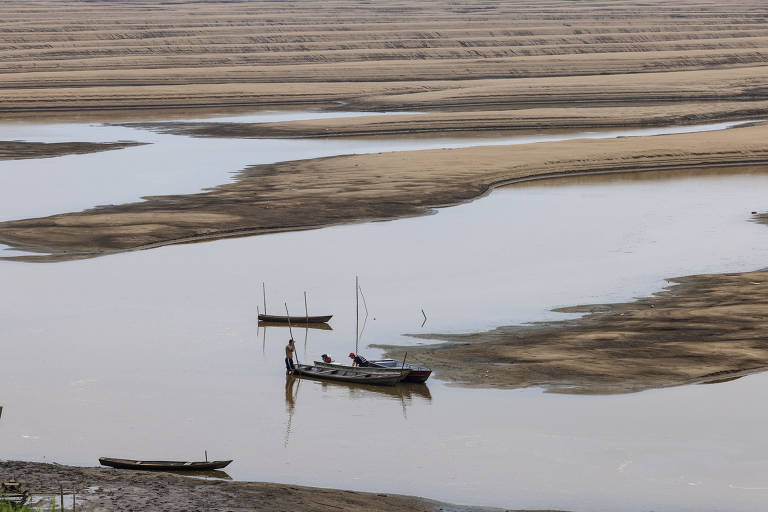The Solimões River is a central vein of the Amazon. It carries ancestry, connects regions and countries, gives life to a multitude of traditional communities on its banks and on the banks of tributaries and streams.
The stretch that bathes the Porto Praia de Baixo Indigenous Land, in the Tefé region (AM), has turned into a desert. The mighty river, which dictated the rhythm of the community, has been replaced by huge sandbanks as far as the eye can see. Kokamas, Tikunas, and Mayorunas cross these sandbanks from one bank to the other, from one end to the other of the indigenous land, in an image reminiscent of a desert.
The transformation is an extreme situation: the indigenous people of Porto Praia unanimously point to the drought of 2023 as the worst ever seen, surpassing the effects of the 2010 drought.
The river has dried up a lot, the sandbanks are more extensive, the boats anchor further and further away, the drought has been lasting longer, and the expectation is that this desert scenario will continue until November. "We have to remove these boats from here today, otherwise everything will be stuck tomorrow," said one of the indigenous people of Porto Praia this Friday (13), regarding about 30 boats parked in front of the community. "The river keeps going down," he says.
